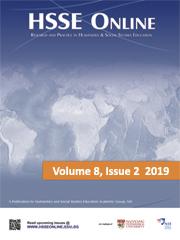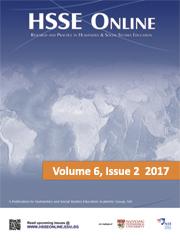Hwee Hwang, Sim (National Institute of Education, Singapore)
Keywords
primary social studies
Primary School
Primary SS Fieldwork
Children’s Localities
Children’s localities refer to the neighbourhoods where the children’s homes, schools and communities are found (Catling, 2011). As these are the places where children live their lives and are easily accessible to their schools, teachers should make use of these localities which are relatively safe environments to deepen children’s understanding of these places and be rooted in them (Barlow, 2017; Milner, Jewson & Scoffham, 2010). This is important as one of the goals of the Singapore’s primary social studies syllabus is for children to know how they can relate to the places and people around them (MOE, 2012a). They need to know how to find their way around their neighbourhoods and value them as sites where meaningful relationships with their families, friends and communities are forged and where memorable memories are created. These localities develop children’s sense of place, identity and community (Barlow, 2017, Catling & Willy, 2018) through their direct or indirect interactions with them. Children are most familiar with their schools’ and homes’ immediate surrounds but not necessarily with places further away from them. Their understandings of the more “distant” places within their localities and beyond are more influenced by indirect influences such as their families’ or friends’ accounts or stories than their limited contacts at these sites. Hence, one way of helping children learn about the places within their localities and beyond is through fieldwork in social studies, that is, learning through “the soles of (children’s) feet” (Steel, 2010) beyond the four walls of the classroom.
Merits of Fieldwork in Children’s Localities and Beyond
In Singapore, social studies is an inter-disciplinary subject comprising geography, history, sociology and economics. The primary social studies syllabus advocates field-based learning in teaching the subject (MOE, 2012b). Its merits as highlighted by the Ministry of Education (MOE) include enabling children learning in a real-world context, increasing their engagement in the subject and deepening their conceptual learning through the connection between outdoor and classroom learning and knowledge construction. Additionally, the literature on fieldwork also expounds other benefits. Catling and Willy (2018) stated that fieldwork enables children’s original perceptions, biases and prejudices of localities to be challenged and modified and will help them attain a more balanced perception and make informed decisions about places. They mentioned that fieldwork promotes children’s skills development in observation, hypothesizing, prediction, analysis, interpretation and even envisioning (of alternative futures) of the sites. Other skills include asking questions, using different sources of information and collecting varied forms of data on site. In addition, children will develop a sense of belonging, identity and appreciation of places. Cantle (2008), Hayward (2012) and Lanza (2012) pointed to the development of children’s sense of empathy and community in their interactions with people living in their localities and beyond. They become aware of the different communities, appreciate the similarities and the diversities amongst them, become connected to them, be engaged in them and show care for them. Through fieldwork, children can also participate as young citizens in environmental or social actions when investigating issues in their localities. These issues can be about environmental impacts, management and sustainability. At the same time, according to Catling and Willy (2018), fieldwork in children’s localities and beyond can integrate social studies with other school subjects such as science, art and craft and language to provide a inter or multi-disciplinary platform for studying places and the people residing and/or working there. This utilisation of fieldwork to achieve inter or multi-disciplinary goals can be particularly useful in view of heavy school curriculum and time constraint in teaching and learning.


